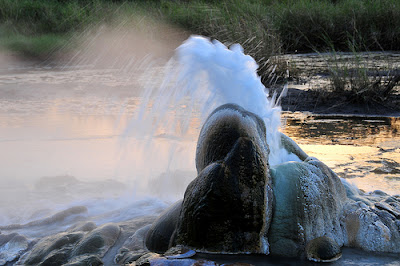SEMLIKI NATIONAL PARK - UGANDA WILDLIFE SAFARIS
 |
| Sempaya hot springs - Semliki National Park |
Semliki
National Park is located in Bwamba County, a remote part of the Bundibugyo
District in western Uganda. Semuliki National Park has an area of 219 sq. km
with an altitude of 670-760m above sea level and is part of the Central African
Congo Basin forest system of the Democratic Republic of Congo (DRC), being
separated from the Ituri forest of the DRC only by the Semliki River.
It is
separated from the rest of East Africa by the Rwenzori Mountain range and with
it being located within the Albertine Rift, the western arm of the Great Rift
Valley; it is included within the Eastern Afro montane biodiversity hotspot.
Semliki national park is an interesting destination not only in Uganda, but also in East Africa for Uganda wildlife tours, bird watching safaris and Nature walks, among other
Semliki
National Park Uganda sprawls across the floor of the Semliki Valley on the remote,
western side of the Rwenzori mountains. The park is dominated by the easternmost
extension of the great Ituri Forest of the Congo Basin.
It is the only tract of true lowland tropical
forest in East Africa, hosting 441 recorded bird species and 53 mammals.
The
Semliki Valley contains numerous features associated with central rather than
eastern Africa. Thatched huts are shaded by West African oil palms; the Semliki
River (which forms the international boundary) is a miniature version of the
Congo River, the forest is home to numerous Central African wildlife species,
and the local population includes a Batwa pygmy community that originated from
the Ituri. As a result, this national park provides a taste of Central Africa without
having to leave Uganda.
Semuliki
Forest Reserve was created in 1932 and upgraded to national park status in
1993.
While
Semliki’s species have been accumulating for over 25,000 years, the park
contains evidence of even older processes. Hot springs bubble up from the
depths to demonstrate the powerful subterranean forces that have been shaping
the rift valley during the last 14 million years.




No comments:
Post a Comment